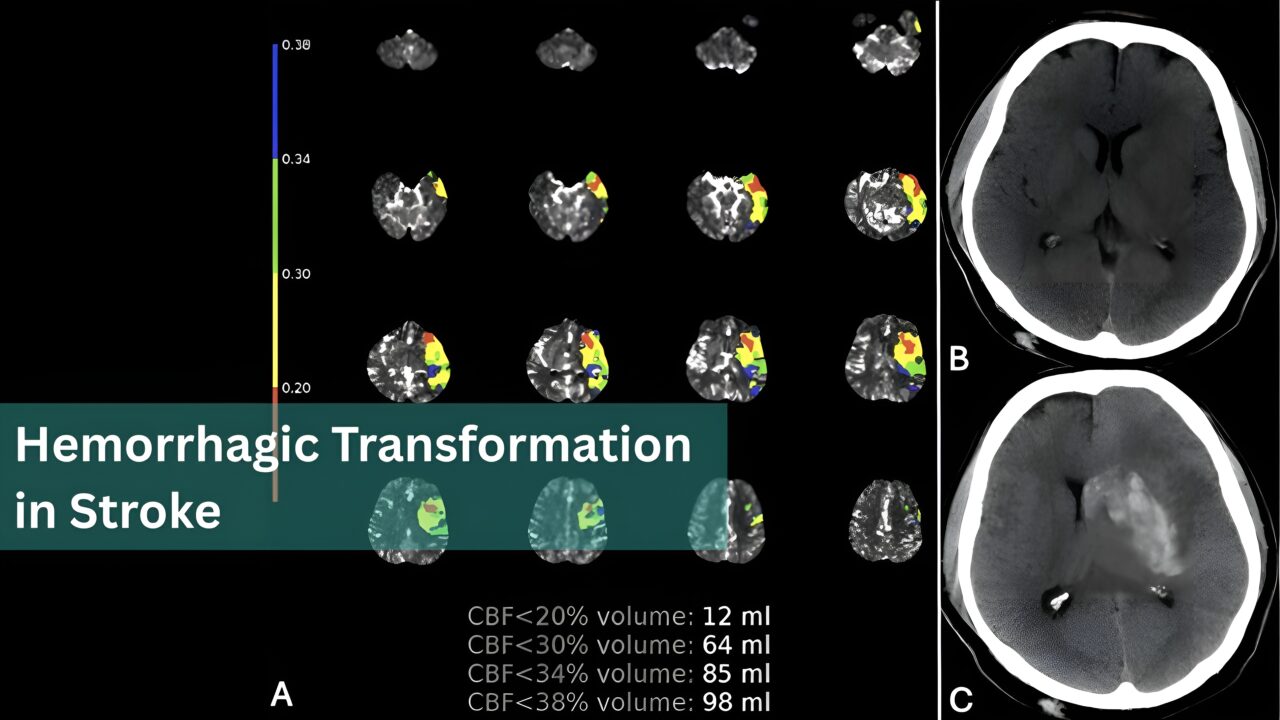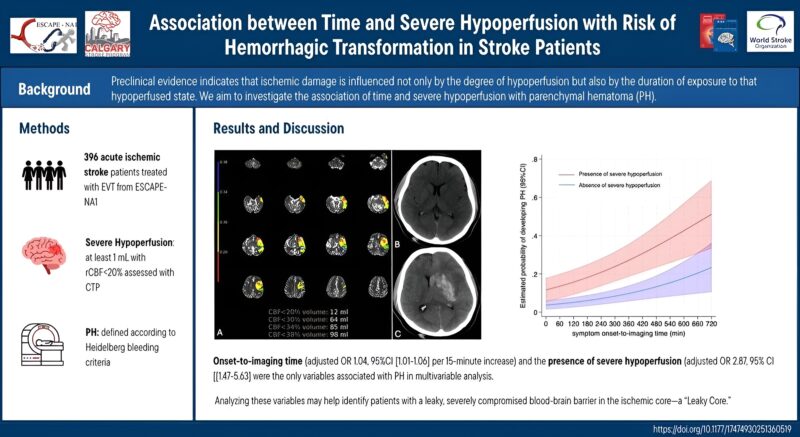
Time and Severe Hypoperfusion: 2 Threats for Hemorrhagic Transformation in Stroke
International Journal of Stroke (IJS) recently shared a post on X:
”Just Accepted!
Study finds hemorrhagic transformation was associated with onset-to-imaging time and presence of severe hypoperfusion. No interaction found between time and severe hypoperfusion.”
Read the full article here.
A new study is reinforcing the importance of timely management of stroke in an article ‘Association between Time and Severe Hypoperfusion with Risk of Hemorrhagic Transformation in Stroke Patients’ by Umberto Pensato et al., published in International Journal of Stroke (IJS).
Emerging evidence highlights that both severe hypoperfusion and time spent in a hypoperfused state contribute to the risk of parenchymal hematoma (PH) in ischemic stroke.
A recent analysis confirms that while each factor independently increases the likelihood of hemorrhagic transformation (HT), their interaction was not statistically significant.
These findings suggest that the risk of HT is influenced by distinct pathways related to hypoperfusion severity and duration.
Identifying patients with a “leaky core”—those with severely compromised blood-brain barriers—could enhance patient selection for targeted interventions!

Hemostasis Today, your daily update on scientific advancements in the World of Stroke.
-
Dec 19, 2025, 13:30PPTA Europe’s Holiday Message: Wishing Health, Rest, and Renewal for 2026
-
Dec 19, 2025, 13:22If You Were Reading a “Bible for Blood Donation Volunteers,” What’s the ONE Thing That Must Be in It?
-
Dec 19, 2025, 12:52Julia Owens: Stroke Remains One of the World’s Leading Causes of Death and Disability
-
Dec 19, 2025, 12:03Pradeep Natarajan: Our New Genetic Study of Aortic Stenosis in ~3M
-
Dec 19, 2025, 11:47ESO Blog: Anna Gardin on Stroke Risk in the Era of Climate Extremes
-
Dec 19, 2025, 10:51Sarah Elkourashy Presents Insights on Caplacizumab for TTP at ASH25
-
Dec 19, 2025, 10:08Camilla Lombardi Shares an EHC Nutrition Guide for People with Bleeding Disorders
-
Dec 19, 2025, 09:56Danny Hsu Shares The ”I-WISh” Study by Nichola Cooper on ITP
-
Dec 19, 2025, 09:39Paul Bolaji: A Landmark Achievement -The Historic 1st Nigerian Stroke Leaders’ Summit 2025
